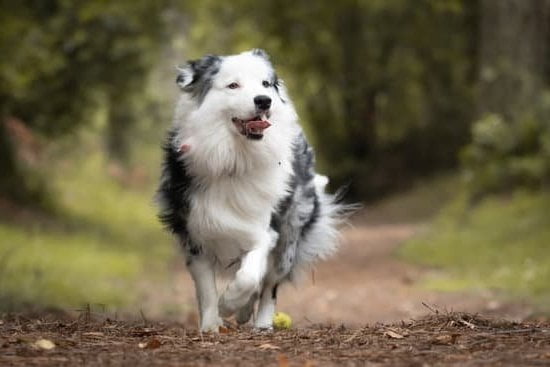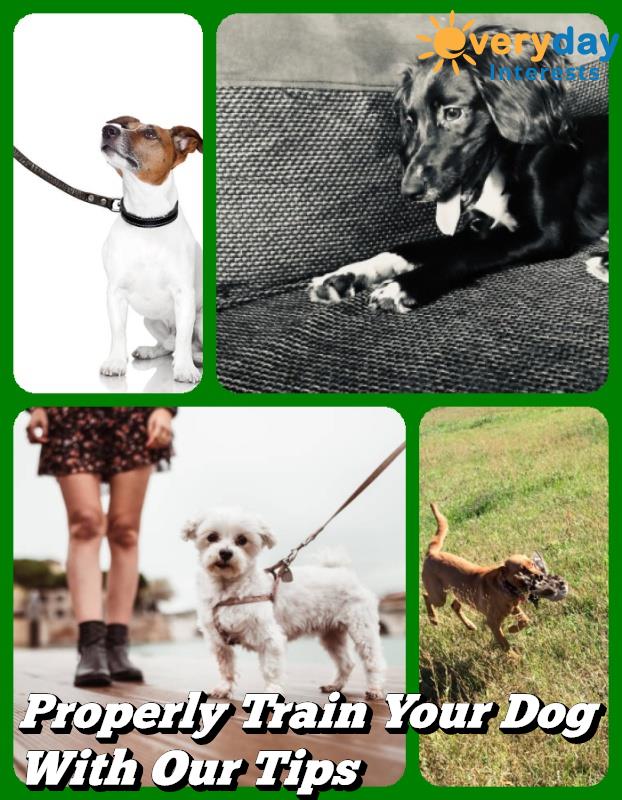Are you struggling with your dog’s behavior during walks? Learning how to train your dog to walk properly is essential for both the safety and enjoyment of the experience.
Proper walking behavior not only ensures that your dog is well-behaved in public settings but also fosters a stronger bond between you and your furry companion. In this article, we will explore the various techniques and tips for successful leash training and address common walking issues such as pulling or leash aggression.
Selecting the right leash and collar for your dog is the first step towards successful leash training. Different dogs may require different types of leashes and collars based on their size, breed, and behavior. Teaching your dog basic obedience commands is also crucial for establishing control during walks. By using positive reinforcement techniques, you can encourage proper walking behavior in your furry friend.
Walking issues such as pulling or leash aggression can be challenging to address, but with patience and consistency, these behaviors can be improved. Regular exercise and mental stimulation are also vital for maintaining a well-behaved walking companion. Additionally, incorporating tips for successful leash training sessions and troubleshooting challenging walking behaviors will help you navigate through the training process effectively. Stay tuned to discover the benefits of a well-trained walking companion for both you and your dog.
Selecting the Right Leash and Collar for Your Dog
When it comes to training your dog to walk properly, selecting the right leash and collar is crucial. The type of equipment you choose can greatly impact your ability to effectively communicate with your dog during walks. The key is to find a balance between safety, control, and comfort for both you and your furry friend.
First and foremost, consider the size and breed of your dog when selecting a leash and collar. Larger, stronger dogs may require a sturdy, durable leash and collar to ensure they remain secure during walks. Smaller dogs, on the other hand, may do well with a lighter, more flexible option.
For most dogs, a standard flat collar or harness is suitable for walking. However, some dogs may benefit from specialized equipment such as head collars or no-pull harnesses. These tools can help address specific behavior issues like pulling or leash aggression.
It’s important to also consider the material of the leash and collar. Leather leashes are durable but may require maintenance over time, while nylon options are easy to clean but may not be as strong. Ultimately, choose equipment that fits comfortably on your dog and allows you to maintain control without causing discomfort.
| Leash/Collar Type | Best For |
|---|---|
| Standard Flat Collar | Most dogs |
| No-Pull Harness | Dogs that pull on the leash |
| Head Collar (Gentle Leader) | Dogs with leash aggression |
Teaching Your Dog Basic Obedience Commands for Walking
When it comes to teaching your dog how to walk properly on a leash, basic obedience commands play a crucial role. The most essential commands for walking include “sit,” “stay,” “heel,” and “come.” These commands will not only help you establish control over your dog’s behavior while walking but also ensure their safety and the safety of others around them.
To start, begin training your dog in a quiet, distraction-free environment such as your home or backyard. Use treats or toys as positive reinforcements to encourage your dog to follow the commands. For example, when teaching your dog to “sit” before walks, hold a treat close to their nose and slowly raise it above their head.
As they look up and follow the treat, their bottom should naturally lower into a sitting position. Once they are in this position, reward them with the treat and praise.
Another important command for walking is “heel,” which means that your dog should walk closely by your side without pulling on the leash. To teach this command, start with your dog on a leash and stand next to them with some treats in hand. Begin walking forward, saying “heel” as you go and rewarding them when they stay close to you without pulling.
Mastering these basic obedience commands will set the foundation for successful leash training sessions as you work towards teaching your dog how to walk properly. Remember to be patient and consistent in your training routines, as this is key to achieving positive results in your dog’s behavior.
| Basic Obedience Commands | How to Teach |
|---|---|
| Sit | Use treats or toys as positive reinforcement |
| Heel | Reward them when they stay close without pulling |
Using Positive Reinforcement Techniques to Encourage Proper Walking Behavior
Positive Reinforcement in Dog Training
Using positive reinforcement techniques in dog training involves rewarding your dog for exhibiting the desired behavior. This can include giving treats, praise, or toys as a reward for walking properly on a leash. Positive reinforcement creates a positive association with the behavior and encourages your dog to repeat it in the future.
How to Implement Positive Reinforcement for Proper Walking
When training your dog to walk properly on a leash, it’s important to use positive reinforcement consistently. Start by rewarding your dog with treats or praise when they walk by your side without pulling on the leash. Over time, gradually decrease the frequency of rewards as your dog becomes more consistent with their walking behavior.
Training Tips for Using Positive Reinforcement
Incorporate positive reinforcement into every walking session with your dog. This will help them understand what is expected of them and motivates them to continue exhibiting the proper walking behavior. Consistency is key when using positive reinforcement, so be patient and remain consistent with rewards every time your dog walks properly on a leash.
Positive reinforcement is an effective and humane way to train your dog to walk properly. By using this technique, you can encourage good behavior and strengthen the bond between you and your canine companion while enjoying pleasant walks together.
Addressing Common Walking Issues Such as Pulling or Leash Aggression
When it comes to walking your dog, dealing with common issues such as pulling or leash aggression can be frustrating. However, with the right training and techniques, you can help your furry companion become a well-behaved walking partner.
Here are some tips on how to train your dog to walk properly and address these common walking issues:
1. Understand the root cause: Before addressing the issue, it’s essential to understand why your dog is exhibiting pulling or leash aggression behavior. It could be due to excitement, fear, lack of socialization, or simply not understanding how to walk properly on a leash.
2. Use positive reinforcement: When training your dog to walk without pulling or displaying leash aggression, using positive reinforcement techniques such as treats and praise can be highly effective. Reward your dog for walking calmly by your side and redirect their attention when they start pulling.
3. Consistent training: Consistency is key when it comes to addressing walking issues. Practice regular training sessions and be patient with your furry friend. With time and effort, they will learn how to walk properly on a leash.
By implementing these tips and techniques, you can effectively train your dog to walk properly without experiencing common issues such as pulling or leash aggression. Remember that every dog is unique, so patience and understanding are crucial in the training process.
Incorporating Regular Exercise and Mental Stimulation for a Well-Behaved Walking Companion
The Importance of Exercise for Walking
Regular exercise is crucial for your dog’s overall health and well-being. A well-exercised dog is more likely to exhibit good behavior during walks, as they have an outlet for their energy. Before embarking on a walk, ensure that your dog has had an opportunity to release excess energy through play or physical activity.
Mental Stimulation for Walking Success
In addition to physical exercise, mental stimulation is important for creating a well-behaved walking companion. Engage your dog in activities such as puzzle toys, training sessions, or scent work to keep their mind active and sharp. Mental stimulation not only prevents boredom and destructive behaviors but also helps your dog focus and remain attentive during walks.
The Role of Consistency in Exercise and Mental Stimulation
Consistency is key when it comes to incorporating regular exercise and mental stimulation into your dog’s routine. Set aside dedicated time each day for physical activities and mental exercises to ensure that your dog remains alert, content, and better behaved during walks. By establishing a consistent schedule, you can help your dog become more receptive to proper walking behavior as part of their daily routine.
Tips for Successful Leash Training Sessions
Leash training is an essential part of teaching your dog to walk properly. A well-trained dog will make walks enjoyable for both the owner and the pet. Here are some tips for successful leash training sessions:
- Start early: It’s important to start leash training as early as possible, especially with puppies. This will help them get used to walking on a leash and prevent any bad habits from forming.
- Use a proper leash and collar: Selecting the right type of leash and collar is crucial for successful training. A standard 6-foot leash and a flat collar or harness are good choices for most dogs.
- Be patient and consistent: Training takes time, so be patient with your dog. Consistency is key – use the same commands and techniques every time you go for a walk.
Troubleshooting and Problem-Solving for Challenging Walking Behaviors
Despite your best efforts, you may encounter some challenging behaviors during leash training. Here are some common issues that dog owners face when teaching their dogs to walk properly, along with potential solutions:
- Pulling on the leash: If your dog tends to pull on the leash, stop walking immediately and wait for them to relax before continuing. You can also try using treats as positive reinforcement when they walk without pulling.
- Leash aggression: Some dogs may exhibit aggression towards other dogs or people while on a leash. It’s important to address this behavior with the help of a professional trainer, who can provide guidance on how to manage and modify this aggressive behavior.
- Distracted behavior: If your dog gets easily distracted during walks, try incorporating mental stimulation activities into your training sessions. This can help keep their focus on you while walking.
Training your dog to walk properly on a leash requires time, patience, and consistency. By understanding these tips for successful training sessions and learning how to troubleshoot common walking issues, you can enjoy more pleasant walks with your furry companion.
Troubleshooting and Problem-Solving for Challenging Walking Behaviors
One of the biggest challenges when it comes to training your dog to walk properly is dealing with challenging walking behaviors. Whether it’s pulling on the leash, leash aggression, or simply refusing to walk, these behaviors can make the walking experience unpleasant for both you and your furry companion. However, with patience and consistency, these issues can be addressed and corrected.
When it comes to pulling on the leash, it’s important to teach your dog proper leash manners. One effective technique is to stop walking as soon as your dog starts pulling and only continue moving forward when they are walking without tension on the leash.
This teaches them that pulling will not get them where they want to go and encourages them to walk by your side instead. Additionally, using a front-clip harness or head halter can also help discourage pulling behavior.
Leash aggression towards other dogs or people can be a challenging behavior to deal with. It’s important to address this issue early on and seek professional help if needed. Using desensitization techniques and positive reinforcement can help change your dog’s association with other dogs or people while on a leash.
If your dog simply refuses to walk or becomes fearful during walks, take small steps to gradually acclimate them to the outside environment. Start by spending time in their comfort zone near the door before gradually moving further away from home. Always use treats and praise as positive reinforcement for taking steps outside of their comfort zone.
By addressing these challenging walking behaviors with patience and positive reinforcement, you can turn walks into an enjoyable experience for both you and your dog. Remember that every dog is different, so it’s important to tailor your training approach based on their individual needs and behavior patterns.
The Benefits of a Well-Trained Walking Companion for Both You and Your Dog
In conclusion, training your dog to walk properly is not only beneficial for their physical health and mental stimulation, but it also strengthens the bond between you and your furry companion. By understanding the importance of proper dog walking and selecting the right leash and collar, you can set a solid foundation for successful training. Teaching your dog basic obedience commands and using positive reinforcement techniques will encourage them to exhibit proper walking behavior.
It’s crucial to address common walking issues such as pulling or leash aggression with patience and consistency. Incorporating regular exercise and mental stimulation into your routine will contribute to a well-behaved walking companion. Remember that successful leash training sessions require time, effort, and dedication on your part, but the rewards are well worth it.
By troubleshooting and problem-solving for any challenging walking behaviors that may arise, you can ensure that both you and your dog enjoy the benefits of a well-trained walking companion. From improving physical fitness to enhancing overall obedience, a well-trained dog not only brings joy to their owner but also creates a harmonious relationship based on trust and respect.
So take the time to invest in proper training techniques, and soon enough, you’ll experience the joys of leisurely walks with your beloved pet by your side.
Frequently Asked Questions
How Do I Get My Dog to Stop Pulling on the Leash?
To get your dog to stop pulling on the leash, you can try using positive reinforcement techniques such as treats or praise when they walk nicely without pulling. You can also use a front-clip harness to discourage pulling.
How Can I Make My Dog Walk Better?
Making your dog walk better involves consistent training and positive reinforcement. Start with short walks in low-distraction environments and gradually work up to longer walks in more stimulating areas. Use treats and praise to encourage good behavior.
How Do You Train a Dog to Walk Beside You Without Pulling?
Training a dog to walk beside you without pulling requires patience and consistency. Use a loose-leash walking technique, where you stop and change direction every time they pull, rewarding them when they walk nicely beside you. Gradually increase the duration of walking without pulling.

Welcome to the blog! I am a professional dog trainer and have been working with dogs for many years. In this blog, I will be discussing various topics related to dog training, including tips, tricks, and advice. I hope you find this information helpful and informative. Thanks for reading!





